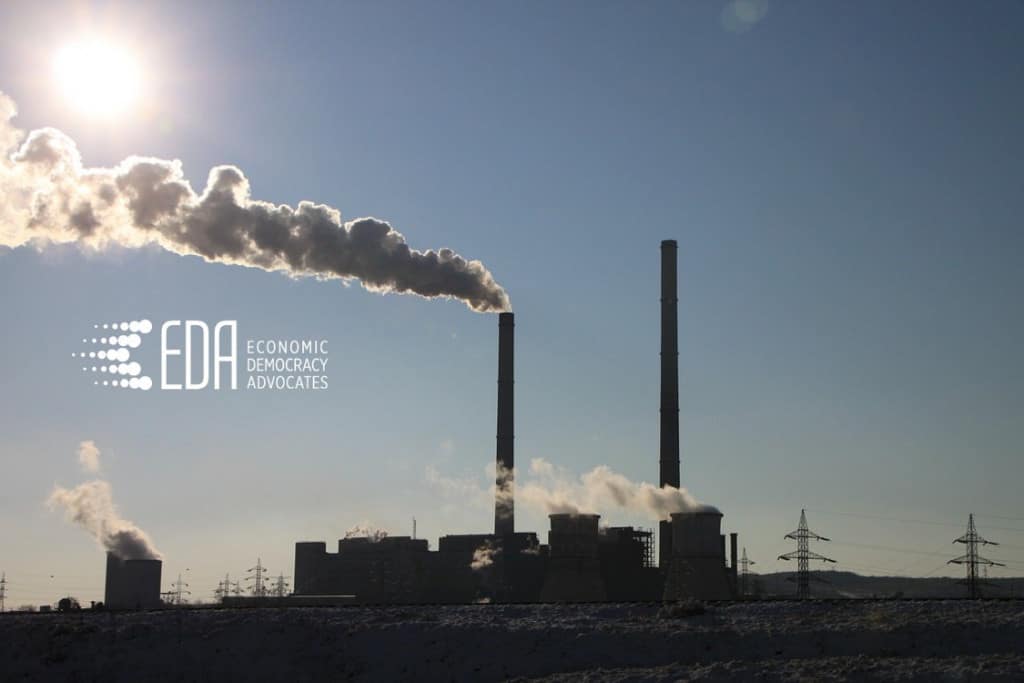The United States of America now finds itself in some pretty unusual company joining only Syria and Nicaragua in declining involvement in the Paris Climate Agreement. When the agreement was originally created, Syria was so deep in its own difficulties and mired in international sanctions that from a practical matter, travel to Paris was nearly impossible. And with no end to the conflict in Syria, there was a real difficulty in committing to any limitation in the troubled country’s emissions.
Nicaragua on the other hand declined to join the agreement because this climate agreement wasn’t going far enough. They didn’t want to agree to the plan that was based on voluntary pledges of compliance with no punishment for any country that didn’t live up to their obligations under the accord.
And now there is the United States, with President Trump’s dystopian speech on June 1, 2017 announcing the US was withdrawing from the accord. The President tried to make the US sound as though it was being unfairly disadvantaged in the agreement. But to put things in perspective, while China is the largest emitter of greenhouse gases in the world (28 percent total comes from China) the US is second at 13 percent. But there is another view of this statistic, where China’s emissions per capita less than half that of the US.
This withdrawal which is stated to benefit the American worker is extremely short-sighted. The opportunities for American workers in new alternative technologies offer new jobs at an ever-increasing rate. In California, green jobs are providing the state hundreds of thousands of new jobs as it moves toward an aggressive goal of 100% renewable energy by 2045. New jobs and renewable energy are bolstering California’s economy while President Trump focuses on old practices that produced elevated carbon emissions and fewer jobs.
We need to focus on the future by raising our voices with our elected representatives and demand new laws to limit this ignorant approach to managing our climate. We can’t continue to stand by idly and let our government deny that climate change is due to human activities. Let’s fight to follow California’s aggressive goals and aim toward a goal of 100% renewable energy. When we make that commitment we can add many, many more new jobs to the US economy.
Let’s focus on protecting the planet for our grandchildren and their children. We can’t be complacent anymore. We have to rise up and make our voices known to protect the future of this planet.

The Eiffel Tower is shrouded in haze as the sun comes up over Paris. (Ian Langsdon/European Pressphoto Agency)
For months, “Will he or won’t he?” has been the parlor game among those wondering whether the Trump administration would withdraw from the 2015 Paris climate agreement. Today, we have the official answer: Yes, President Trump will withdraw the United States from the Paris Agreement.
How did we get here?
According to The Washington Post and other reporting, the administration was divided between those who wanted to stay in, including the president’s daughter Ivanka, and those who wanted to leave, particularly Environmental Protection Agency Director Scott Pruitt. Some Cabinet members who were otherwise hostile to action on climate change — such as Energy Secretary Rick Perry — wanted to stay in the agreement and renegotiate the terms.
The splits within the administration reflect similar divisions in civil society. Many major companies, including energy giant ExxonMobil, wanted the United States to stay in. In fact, more than 360 leading companies, including DuPont, eBay and Nike, signed an open letter urging the president to stay in the agreement. Some U.S. companies wanted the United States to stay in to shape the rules going forward and provide for consistent policy so they could plan investments.
[The Trump administration can’t entirely roll back progress on climate change. Here’s why.]
During Trump’s visit to the Vatican, Pope Francis made a personal appeal to the president to stay in the agreement, by presenting him with the pontiff’s 2015 encyclical on climate change. At the Group of Seven meeting, Trump faced intense pressure from allies to stay in — but the final statement noted that the United States was continuing its policy review while the other G-7 countries remained committed to the agreement.
What does U.S. withdrawal mean?
Under the normal rules of the agreement, the United States cannot withdraw until November 2020: A country cannot announce its formal withdrawal until three years after the agreement entered into force. Even then, it takes one year from the date of notification for that withdrawal to take effect.
However, there is a nuclear option. The United States could signal not only its intent to withdraw from the Paris agreement but also from the 1992 parent U.N. Framework Convention on climate change. That move would take the U.S. out of both within a year.
Though negotiated in 2015, the Paris agreement only entered into force on Nov. 4, 2016. That means, barring U.S. withdrawal from the UNFCCC, the United States will still be a party to the agreement between now and November 2020. If Trump loses a reelection bid, his successor could promptly rejoin in January 2021.
Until then, it remains an open question how large and vigorous a presence the United States will play in the climate negotiations. Almost certainly, the United States will not deliver the $2 billion that remains of its $3 billion pledge to finance international climate efforts. In further negotiations, will the United States send emissaries who actively try to prevent agreement, spoiling others’ efforts to ameliorate climate change? Will it simply neglect others’ efforts, sending only a few people and staying on the sidelines, as it did in the most recent meetings in Bonn? We do not know.
What does this mean for the fate of the agreement?
Advocates have worried that U.S. withdrawal from the Paris agreement would encourage other countries to pull out. That does not appear to be happening. Both the European Union and China have reaffirmed their commitment to the agreement. Even India, which faces intense pressures to use any energy source available to develop, said it remains committed to the agreement.
Less clear is whether the U.S.’s withdrawal will sap other countries’ motivation and efforts to reduce greenhouse gases, and how rigorously other nations will use the agreement’s transparency mechanisms, which are still being developed, to evaluate those efforts.
That’s important, because of how the agreement was supposed to operate. The emissions mitigation commitments of the Paris Agreement are nonbinding. It is not a treaty. Country commitments are entirely voluntary, based on national circumstances. Each country decides on its own what it intends to do.
However, the intent of the agreement was to increase collective ambition over time through review — the “ratchet” mechanism. In 2018, there will be a stocktaking exercise to see how country actions are unfolding. That assessment was intended to help strengthen commitments in 2020, with the whole exercise repeated every five years thereafter. The idea was to bring a virtuous “keeping up with the Joneses” pressure of mutual responsibility and expectation.
But the United States is still the second-largest emitter of greenhouse gases; in 2013, it was responsible for about 13 percent of the world’s total, after China’s 28 percent. Once the United States weakens its domestic climate policies, will that reduce other nations’ pressure on one another, sapping other nations’ political determination to change?
As part of the Paris Agreement, the Obama administration had made a commitment to reduce greenhouse gas emissions 17 percent below 2005 levels by 2020 — and 26 to 28 percent by 2025. The United States might still meet its 2020 target, according to separate analyses by Climate Advisers and the Rhodium Group.
But meeting the 2025 target will be difficult if the Trump administration continues to roll back various clean energy steps. Already, the Trump Administration has sought to weaken or reverse a number of Obama climate policies — including an executive order to dismantle Obama’s Clean Power Plan, which would have regulated carbon dioxide emissions from electricity plants using fossil fuels, and by seeking to eliminating rules on methane emissions and automotive fuel efficiency.
States like California may try to reduce emissions nevertheless, through their own rules. But the loss of momentum federally will likely make a difference in U.S. emissions — and possibly other countries’ ambitions.
Will this affect the U.S.’s standing in the world?
The Paris Agreement has more global buy-in from the rest of the world than the 1997 Kyoto Protocol, which the United States also famously repudiated. Key countries like China and India, which did not have commitments to reduce emissions under Kyoto, have voluntarily made commitments under the Paris Agreement. China is now positioning itself to be a global leader on climate change and will use this to buttress its soft power in other realms.
For the United States, the consequences could be significant. Some countries are talking about trade sanctions or a carbon tax on U.S. imports. Nigel Purvis, a former State Department diplomat and longtime climate policy expert, tweeted, “first comes international blowback, but the real damage will be a dramatic loss of U.S. soft power — felt on issues far from climate.” The next days and months will be a test of how significant those consequences really are.
Article written by: Joshua Busby
Article originally published in Washington Post.


